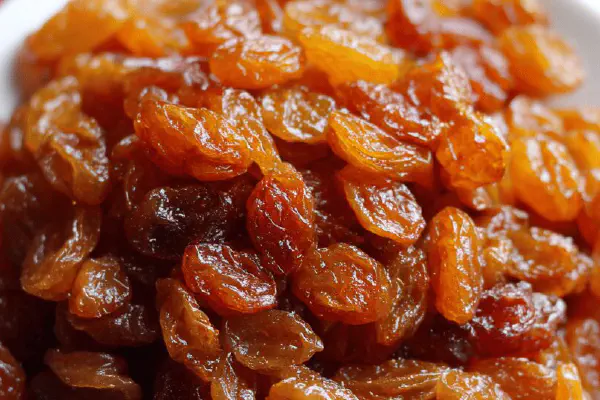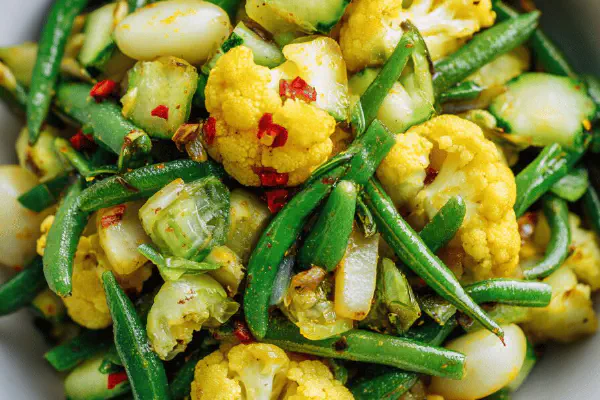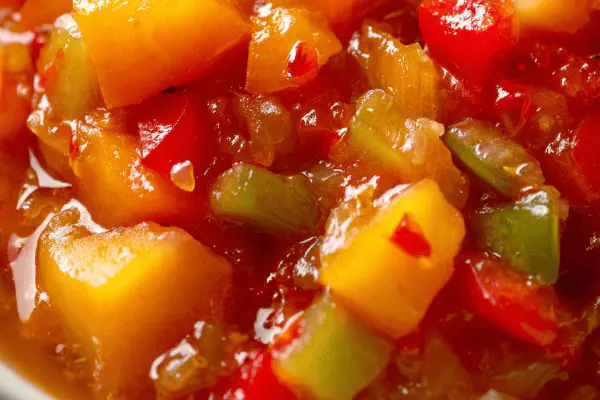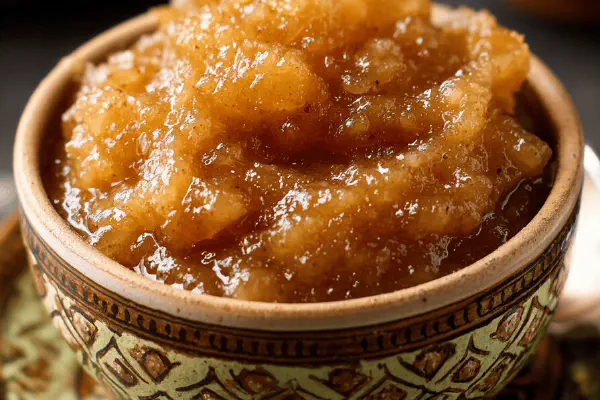Pear Butter Slow-Cook
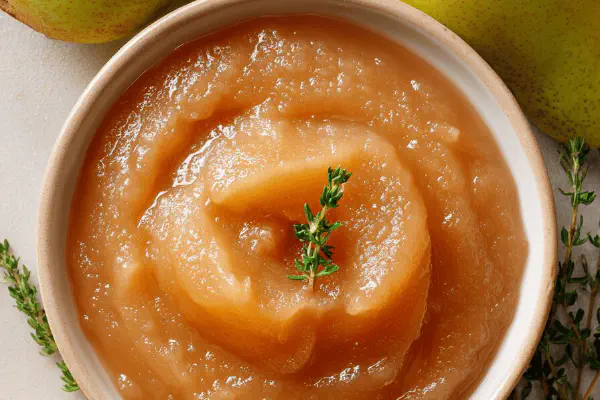
By Emma
Certified Culinary Professional
Ingredients
- 2.1 kg Anjou pears, cored and sliced (approx 13 pears)
- Juice of 1 lemon
- Granulated sugar to taste (start with 150 g)
About the ingredients
Method
- 1 In large heavy pan, toss pears with lemon juice, cook over medium-high heat about 12 minutes, stirring often, until pears start to soften and release juices. Listen for simmering sound to quicken, slight sizzle. Avoid browning.
- 2 Transfer pears to blender or food processor; pulse to a uniform purée without leaving chunks. Press purée through fine mesh sieve into same pot for smooth texture. Scrape down sides to get all the pulp back.
- 3 Bring purée to gentle boil over low heat, then simmer very gently, uncovered, stirring practically nonstop to prevent scorching. Let cook 2 hours 45 minutes to 3 hours 10 minutes until mixture thickens enough to spread like soft butter; will darken color to rich golden tan. Watch for glossy sheen and resistance when stirring. If clumps form, use whisk.
- 4 Taste test: add sugar little by little, stir to dissolve; increase sweetness to personal liking. If too tart, a pinch of ground cinnamon or vanilla can add depth.
- 5 Let cool to room temperature, then spoon into sterilized jars. Store in fridge for up to 14 days. Will keep thick and spreadable. If not planning to finish soon, freeze leftovers.
- 6 Optional: While simmering, skim froth occasionally. If fruit is watery, add a teaspoon of ground pectin near end to speed thickening. Don't rush reduction by raising heat, scorched flavor kills subtle pear notes.
Cooking tips
Chef's notes
- 💡 Keep heat low and steady. Too high scorches bottom, kills delicate fruit flavor. Watch simmer closely; bubbles small, steady — no furious boil. Stir often but gently. Scraping bottom constant avoids catching. Avoid whips, air ruins texture. Use heavy pot not non-stick; caramel sticks weirdly there.
- 💡 Puree pears before simmering but not too much. Over-processing makes pastey texture. One quick pulse until mostly smooth, then sieve through fine mesh for silky finish. Press pulp with wooden spoon, get max yield. Yes, extra work but texture pays off in spreadability and mouthfeel.
- 💡 Adjust sugar after cooking. Add little at a time, tasting at intervals. Depends on pear ripeness, acidity. Can swap white sugar with coconut sugar or maple syrup for flavor twists but changes cooking time and color slightly. Cinnamon or vanilla added late in simmer adds warmth without overpowering fruit notes.
- 💡 Skim froth during simmer to keep clear appearance. Waterier fruit means slower thickening; consider draining some juice after first cook step or add a pinch of pectin near end if don’t want long reduction time. Don’t rush by turning heat up; scorched flavor dulls pear sweetness and aroma.
- 💡 Test thickness by dripping a spoon on cold plate. If it holds shape, it’s right. Watch for glossy sheen, color deepens from pale cream to warm golden tan close to finish. Stir resistance changes too, thicker batter pulls more slowly. Cool completely before jarring to avoid condensation and spoilage.
Common questions
Can I use other pear types?
Yes but cook time varies. Bosc denser take longer; Bartlett softer, faster breaking down. Adjust stirring frequency; softer pears scorch easier. Juiciness changes yield and texture; may need less or more sugar.
What if mixture burns or sticks?
Lower heat immediately. Heavy pot essential; non-stick bad for caramelization patterns. Stir constantly but gently. If too thick too soon, add splash water or lemon juice to loosen. Start over if burnt flavor too strong.
How to store leftovers?
Refrigerate up to 14 days. Keep sealed cold. No canning needed here. Freeze in portions for months, ice cube trays good. Thaw gently to keep spreadable. Avoid warm temps to prevent spoilage and yeast growth.
Is pectin needed?
Not usually if simmering low and long. Pectin helps if pears super watery or cook time shortened. Add pinch near end. Powdered better than liquid here because it doesn’t dilute. Skip if texture solid enough for spreading.
